Another thing I made as gifts this year were jars of golden Ghee – clarified butter (or drawn butter.)
Ghee is pure butterfat – it is butter that is gently heated to the point of separating out the water and milk solids from the oil – which makes it lactose-and casein-free.
It is a very heat-stable aromatic fat, making it great for cooking. It develops a delicious rich nutty flavor, and I pretty much slather it on everything I eat.
The beautiful deep yellow color of the ghee is indicative of the high content of fat-soluble vitamins – and this is greatly increased by getting butter from cows who have grazed on fresh pasture.
A unique property of ghee is it’s ability to penetrate deep into the cells, making it’s nutrients easily absorbed by the body, and making it a good carrier for nutrients that are consumed with it.
The Indian healing modality of Ayurveda utilizes ghee as potent medicine. It is excellent for digestive problems – repairs the gut lining, balances cholesterol, promotes healthy thyroid function, nourishing to the brain and mental function, contributes to healthy skin, and is tridoshic – meaning it is beneficial for all 3 ayurvedic body types.
(I got a lot of this info from a member of my local WAPF (Weston A. Price Foundation) yahoo group. Unfortunately I can’t remember who posted it, but thank you to them. By the way, WAPF is an amazing resource for little known and practical information on health and nutrition. They have an encyclopedia of info on their website.)
Ghee is my one addiction I cannot imagine living without.
I make my own at home because it is easy and much more affordable than buying it.
To make it you will need:
– a thick bottomed stainless steel pot (no lid necessary)
– 16 oz. of butter (4 4oz. sticks or 2 8oz. bars)
– something to strain it (mesh strainer, cheesecloth, etc.)
– something to strain it into ( a glass jar)
The process should generally take about 15 minutes. It could take longer if you decide to use a lower heat.
Put sticks of butter into your pot. Do not cover it. Put it onto a medium heat. I just leave it at medium for the whole process. You dont need to watch it the whole time, but keep checking periodically.
It goes through stages. The butter melts. It simmers and bubbles. It starts to separate into three distinct layers. Little bits of milk solids stick to the bottom of the pot. In the middle is the layer of yellow butterfat. On top is a white foamy layer that is the liquid evaporating off. It tends to go through a vigorous bubbling popping phase as the water boils off. Eventually it starts to get quieter and the foam begins to disappear. When things start to get real quiet and/or once you see slight browning of the foam around the edge of the pot, turn the heat off.
It is very easy to burn the ghee at this point, so now is the time to pay close attention. Although I will say, even burned ghee is delicious. It turns out more brown than yellow. Probably loses some of it’s potency, but I usually still use it. If you wait too long sometimes the bubbles on top start getting really tiny again – almost like foam – and the foam will start to rise very quickly and over flow the pot. It is definitely a learning process.
You will want to let it rest and cool a bit for at least another 15 min – 1/2 hour before straining.
You may find other methods that work for you, but what I do at this point is I pour the contents of the pot through a mesh strainer into my jar.
You can dump what is left in the pot and strainer into the garbage or compost. Nothing usable there.
Put the lid on the jar and you can leave the oil out at room temp. It is very stable. Depending on how hot or cool it is in the room it will be liquid or solid or something in between.
Like I said, I put it on everything, even into my smoothies. It makes food taste better, more digestible, and make it’s nutrients much more available.
ah, the glory of ghee.
p.s. If you are wary of saturated fat, please relieve yourself of this concern. Natural, healthy saturated fats do not make you fat. They actually contribute to satiety, making you feel less hungry, among their numerous other benefits. Trans fats and refined vegetable oils, excluding olive oil, should be avoided however. For more info on fats look here.
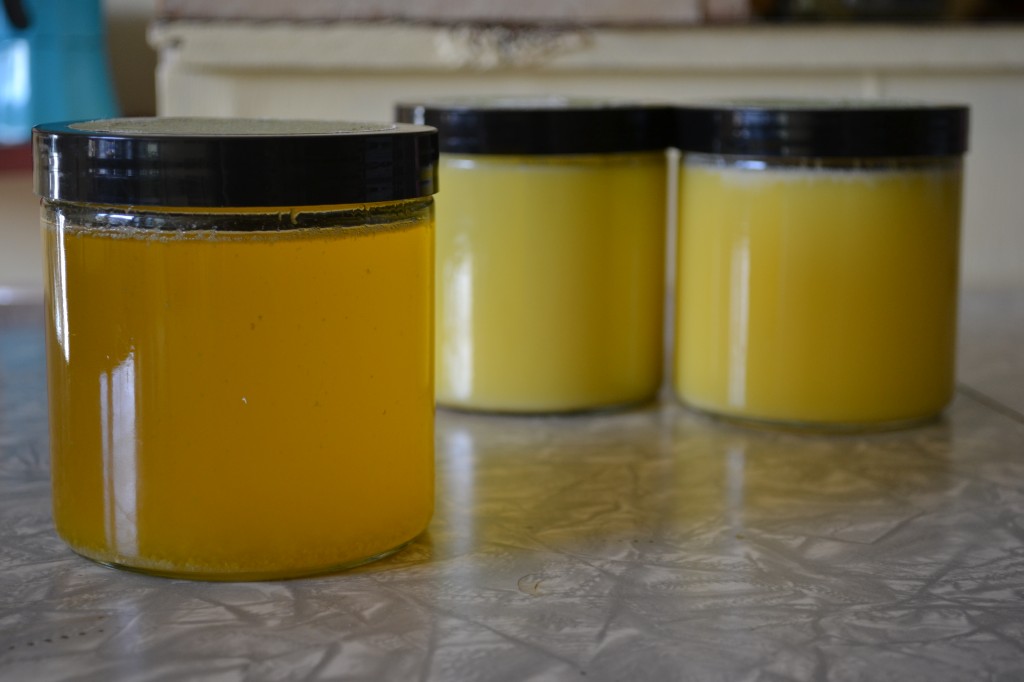
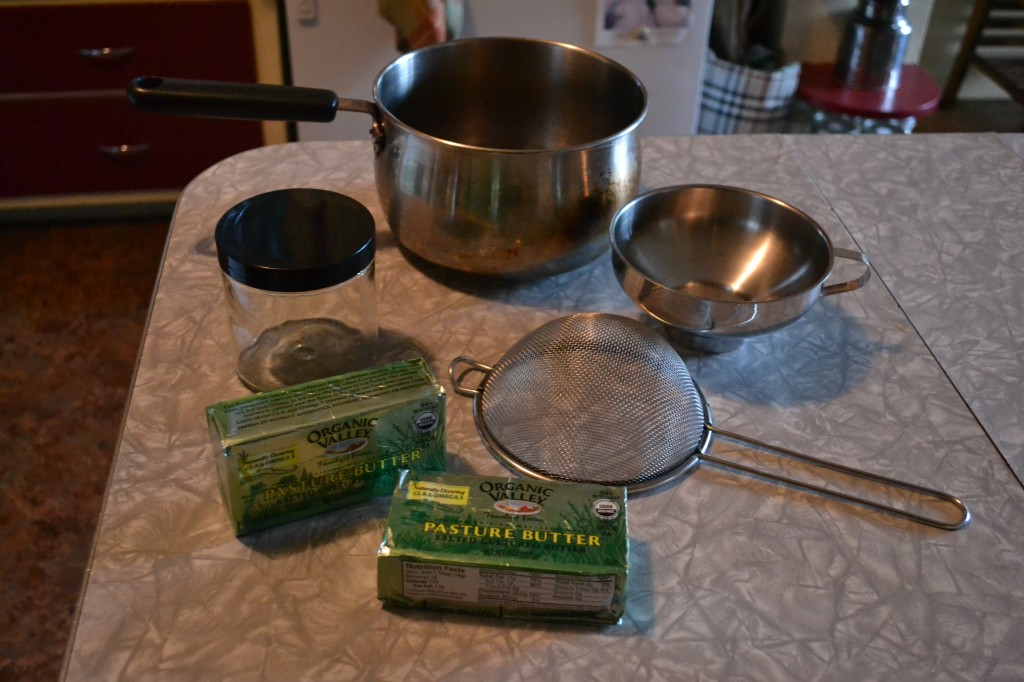
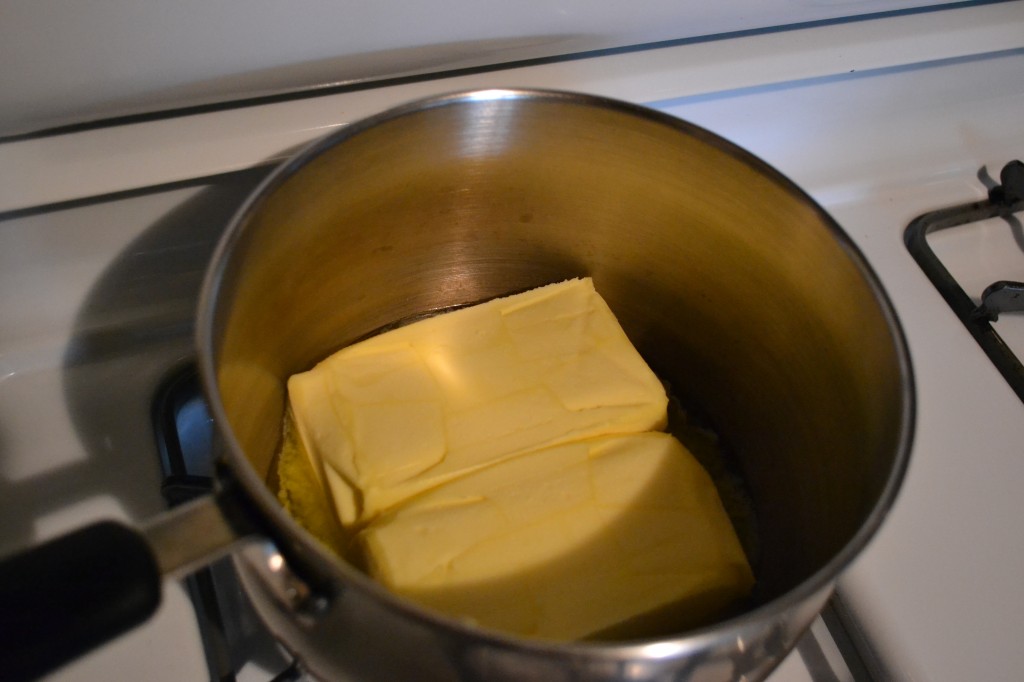
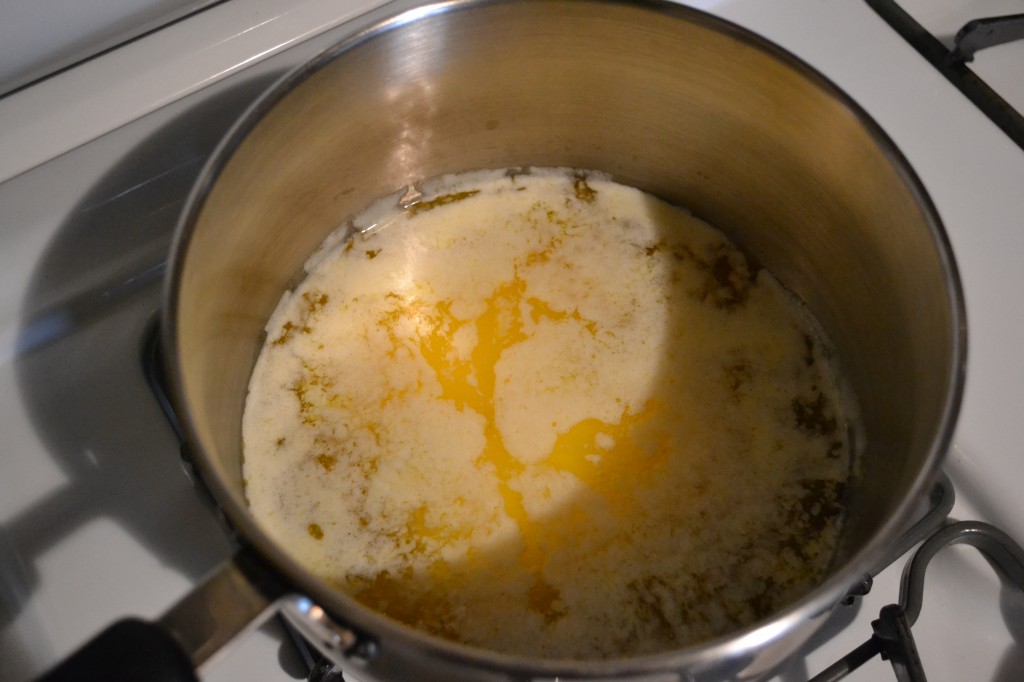
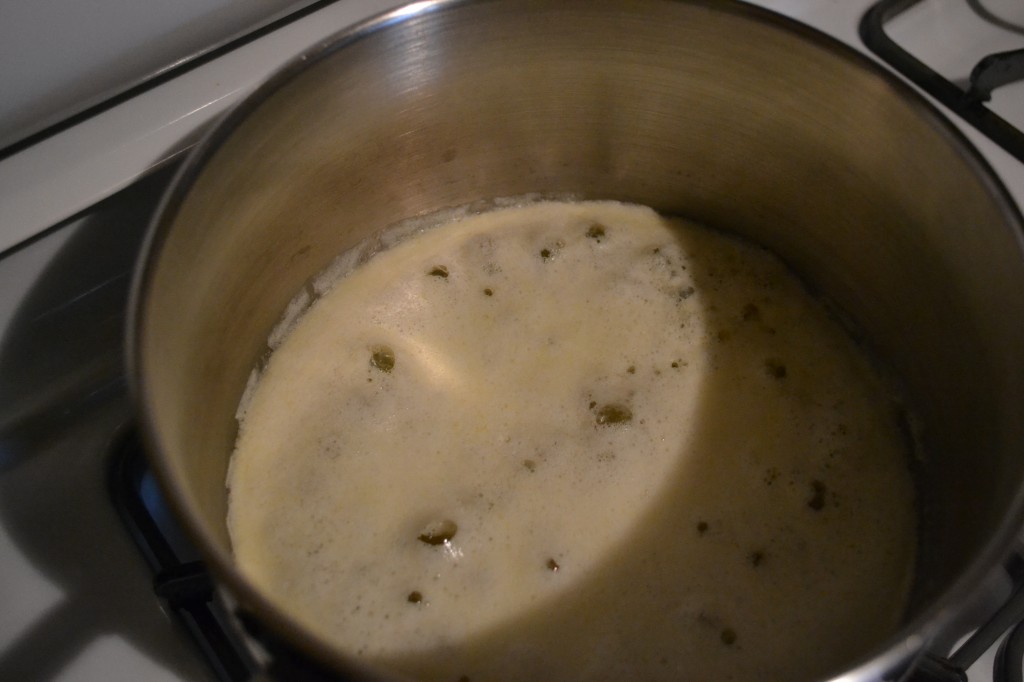
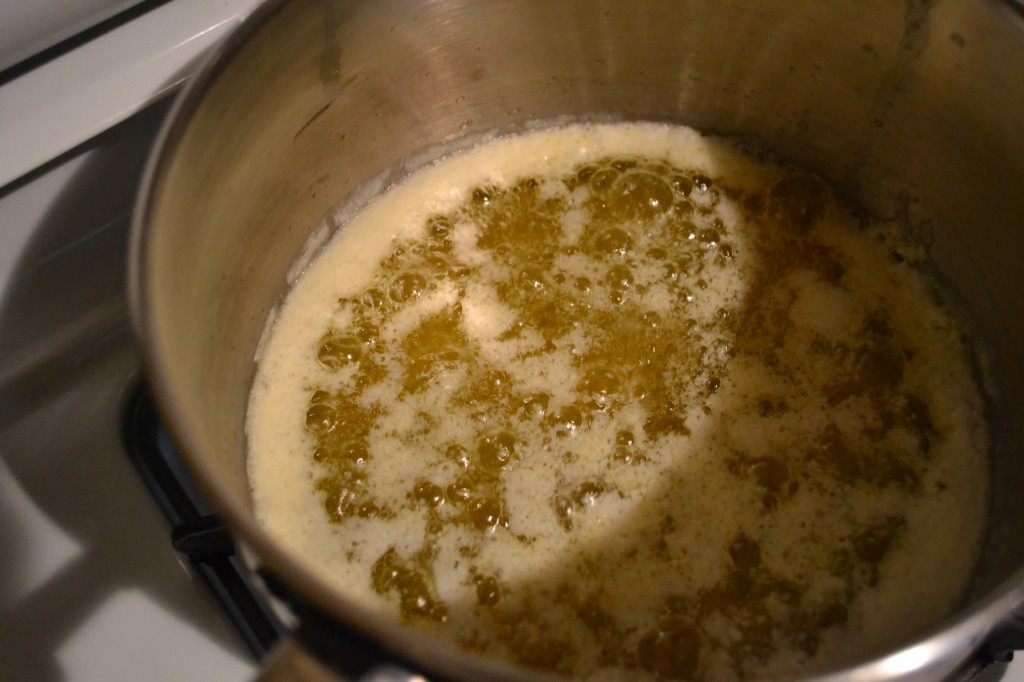
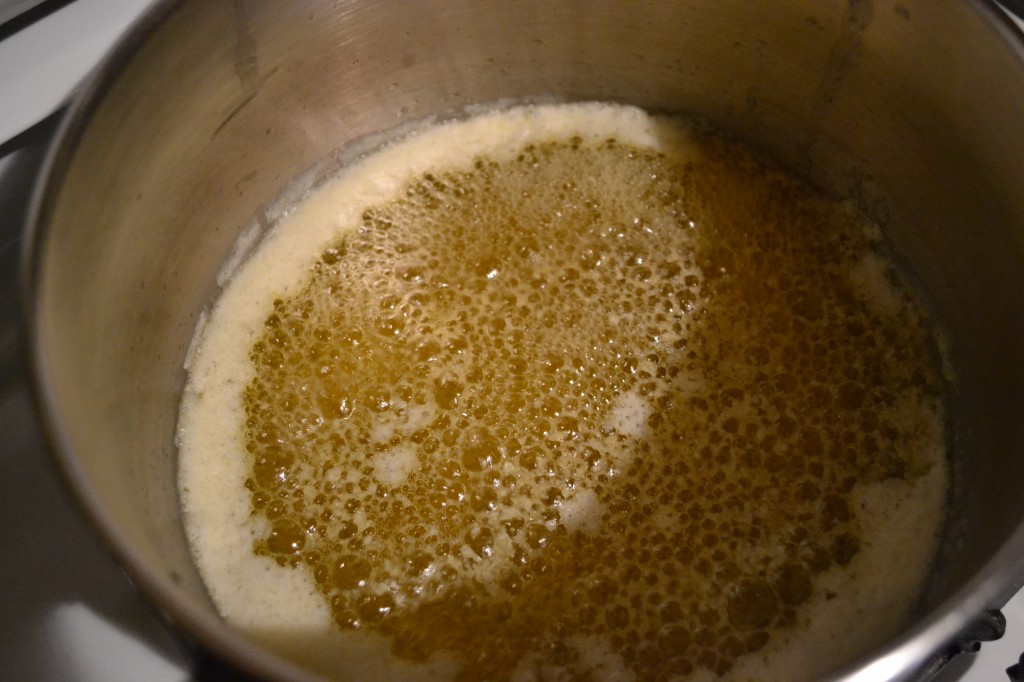
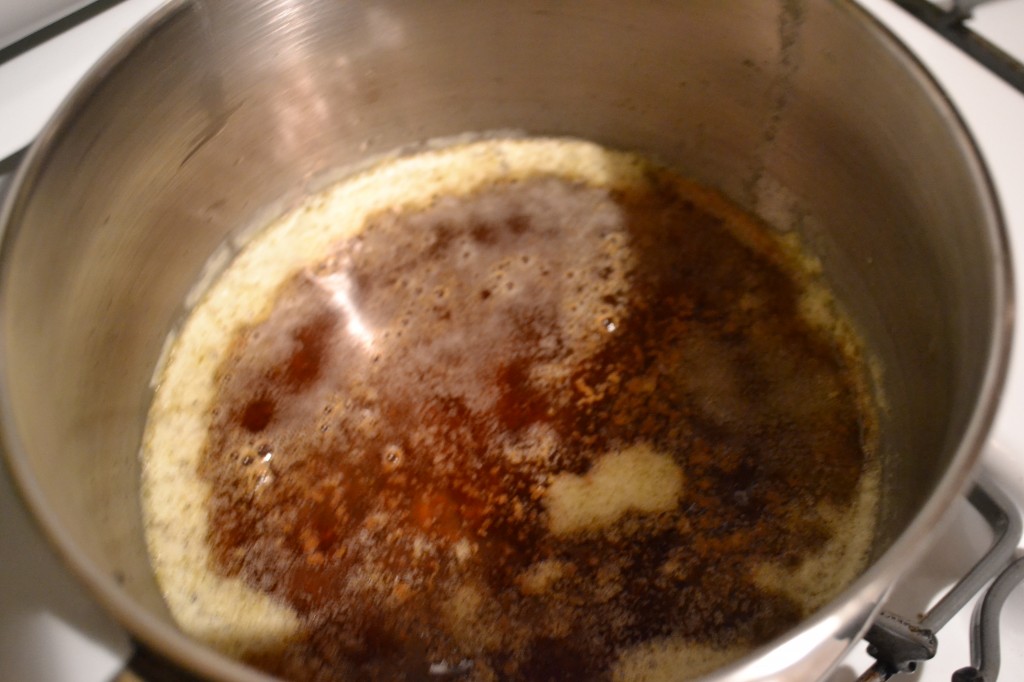
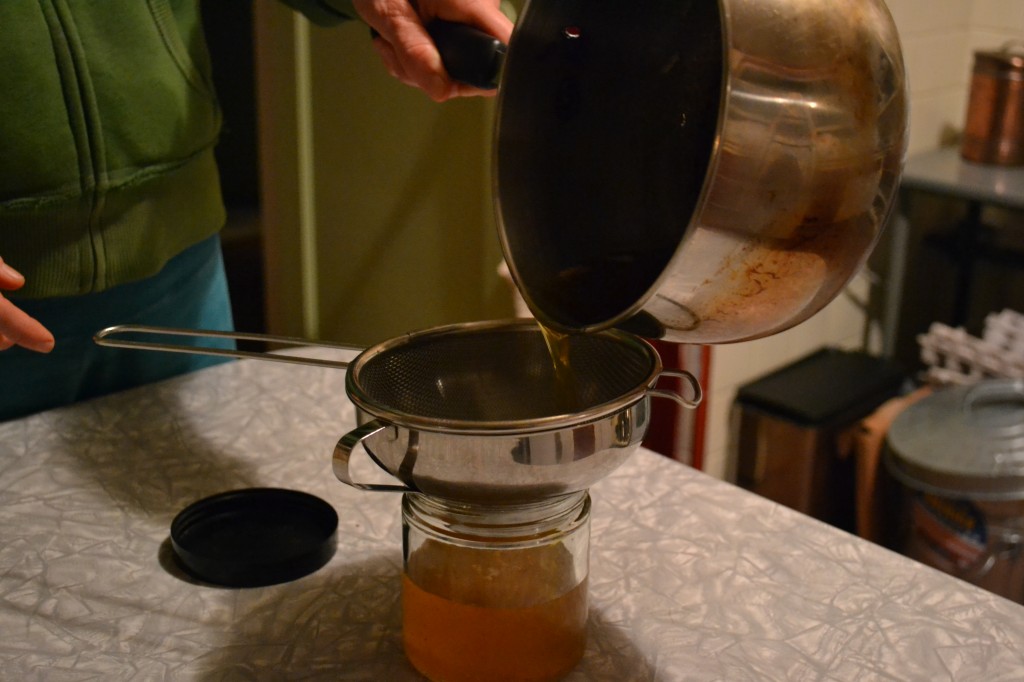
Leave a Reply